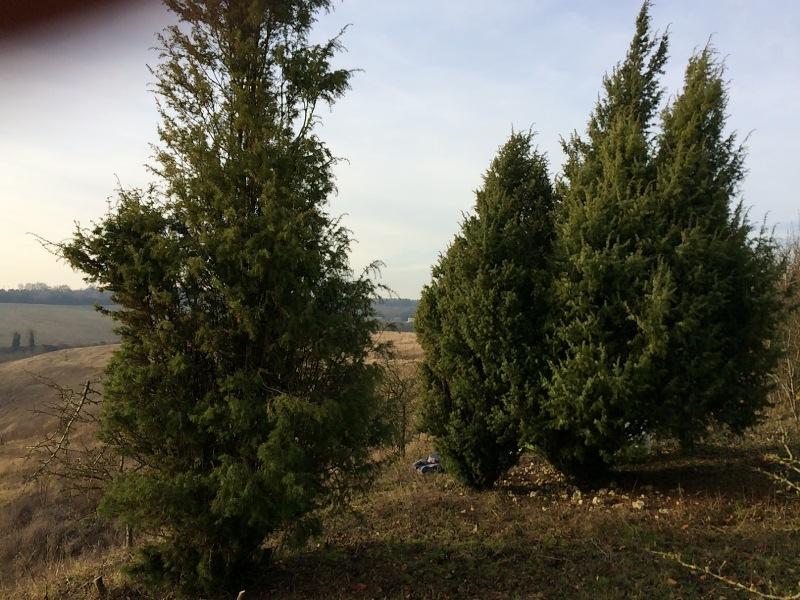Many counties in southern England have lost over 60% of their Juniper population and in Bedfordshire the last remaining population is found at CEMEX’s Kensworth Quarry which is a working Quarry and a Site of Special Scientific Interest (SSSI).
Juniper is an evergreen shrub or small tree in the Cypress family. They are slow-growing, typically they grow about 3-5cm per year and live on average for about 100-120 years, however, they can live for longer, for example, the oldest recorded Juniper in the UK was aged at 255 years.
 There is a long association of Juniper with people and it is for its culinary, medicinal and ritual properties that Juniper is best known. The most famous use of the Juniper berries is in the flavouring of gin as well as flavouring many foods and liqueurs. Juniper berries may also have been added to food for their medicinal properties as they were said to aid digestion and to be a cure for various stomach ailments. The earliest recorded medicinal use of Juniper berries occurs in an Egyptian Papyrus dating back to 1500BC in a recipe to cure tapeworm infestations.
There is a long association of Juniper with people and it is for its culinary, medicinal and ritual properties that Juniper is best known. The most famous use of the Juniper berries is in the flavouring of gin as well as flavouring many foods and liqueurs. Juniper berries may also have been added to food for their medicinal properties as they were said to aid digestion and to be a cure for various stomach ailments. The earliest recorded medicinal use of Juniper berries occurs in an Egyptian Papyrus dating back to 1500BC in a recipe to cure tapeworm infestations.
The Junipers at Kensworth Quarry are found just south of the Quarry dispersed along two rows of chalk cliffs in a roughly 1 ha area. All of the mature shrubs were being engulfed by invading shrub which was limiting their access to light, water and nutrients and making it very hard to count how many there actually were.
To preserve the last remaining Bedfordshire population of Junipers we needed to be proactive and on 5th December 2016 The Wildlife Trust, with the help of CEMEX, spent a day clearing the Hawthorn and Blackthorn scrub from around the Junipers to give them more space and allow them to grow unimpeded. Also, this management opened up the ground layer, improving conditions for seedling establishment.
This clearance work also allowed us to get up close and count them and overall we found 17 Junipers of a mix of male and females, of which 11 were mature and 6 were seedlings growing underneath or near the mature shrubs. We also took some of the ripe berries away and some cuttings from the mature shrubs to grow on and in the future plant them in other suitable areas to expand the population. We also have six 1m tall Junipers which were grown on from cuttings taken several years ago from this population, and grown on in a tree nursery; they are now ready for planting into the publically accessible Nature Reserve at Kensworth Quarry next spring.
Many thanks to Laura Downton from The Wildlife Trust for this article.
